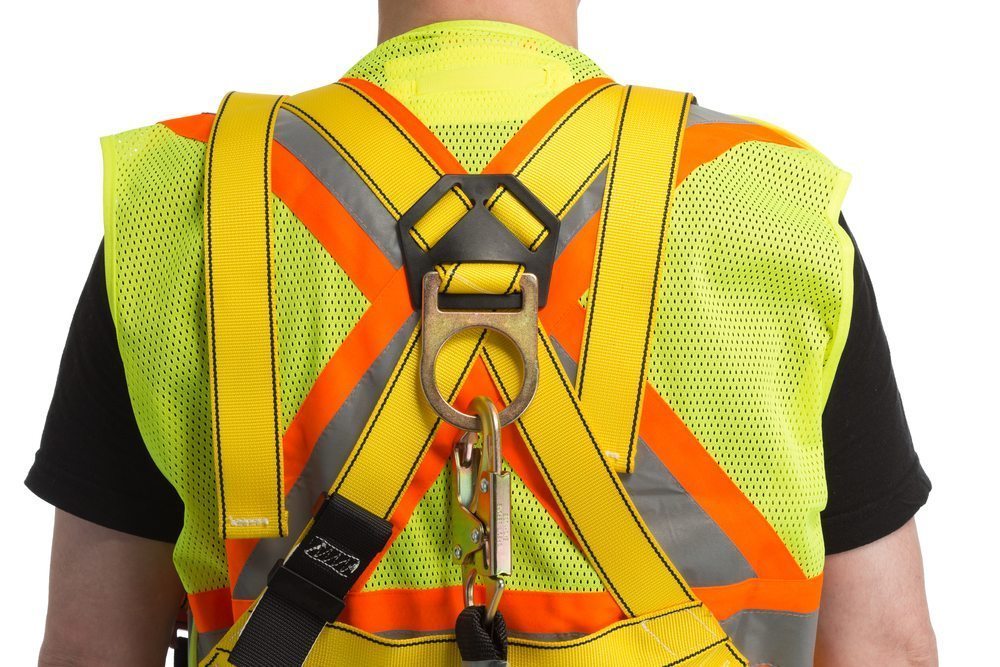Every May, the Occupational Safety and Health Administration (OSHA) kicks off its national safety program, National Safety Stand-Down, to highlight fall prevention at work sites.
According to OSHA, there were 291 fatal falls in 2013 out of 828 total fatalities. The organization states all of these falls are avoidable, but companies have to follow proper safety procedures. Work sites and organizations can remember three fall prevention steps in order to protect workers: plan, train and provide.
Plan and Provide
Whenever employees are completing their work from heights, it is up to the employers to ensure the right equipment and safety procedures are in place. This means ladders, scaffolds and safety harnesses are all provided and up to standard.
Additionally, the plans must contain information about how, exactly, the job will be completed. This may include the hours spent on the work site, how many weeks or months until everything is finished and which safety equipment will be needed.

Different jobs will require different sets of safety gear because certain hazards pertain to particular work sites. A roofing job involves risks that are not present while working on a skyscraper. Workers on a roof have to be aware of hazards such as leading ledges and skylights.
No matter the type of job, if workers are 6 feet above the ground, safety equipment is needed to prevent serious injuries. It’s not good enough to simply have any ladder or safety harness. Specific types of gear are needed, which will also have to include safety nets, guardrails and personal fall arrest systems (PFAs).
OSHA compiled a list of the most common citations companies incur. As of 2013, the top 5 citations are:
- Duty to have fall protection in place
- Ladder safety
- Fall protection training
- Facial protection
- Scaffold requirements
The Importance of Training for Fall Prevention
As important as it is to plan and have the correct safety equipment, so too is the need to train employees. Not only do they have to be trained about the intricacies of the job they are tasked with, but they also need to know how to operate and handle the safety equipment. Accidents are still a possibility if workers are not sure how to properly wear a safety harness, for instance.
OSHA has developed a training overview for various work site hazards. With regard to ladder safety, employees should be taught safety measures that include the need to ensure the ladder is on even footing. Workers also have to follow the three point rule, which states workers must always have two feet and one hand, or one foot and two hands on the ladder at all times.
For scaffolds, workers will need to be taught how to properly set them up and abide by best practice safety habits. For example, scaffolds need to be properly accessible. It is also important employees understand they should never stand on the guardrails, go over the cross braces or use a ladder on a scaffold.
Roof safety involves the use of fall protection gear, such as safety harnesses and PFAs. In an OSHA illustration, the organization advises workers to make sure a harness properly fits and is being worn at all times. This gear should always be inspected before being used.
Additionally, all holes on a roof should be covered up or isolated to help prevent someone from accidentally falling through.
OSHA is using the beginning of May to remind work sites and workers that fall prevention safety needs to be taken seriously. Companies and individual employees should take the time to look over these resources and more from OSHA.
Read more:
The Importance of Fall Protection at Work
Use Hierarchy of Controls to Create a Drops Free Zone
Head Protection Standards: It’s Always a Good Time for a Refresher on Hard Hats
How to Create a Worker Safety Training Program
Why and How to Get Involved in Safety Standards
E-commerce offerings:
Fall Protection
Harnesses
Hoists
Ladders
Scaffolds
Safety
Call and let us help meet all of your product and solution needs (866-483-7289).
Did you know that any customer is eligible for online ordering? All you need to do is fill out this online form.
Key benefits include:
- Order anytime, 24/7, 365 days a year. If you can connect, you can place an order.
- Create custom order templates, aka “My Lists.” Reduce search time, click, order, done.
- Track purchase history and view your account information. You can review invoices any time, track purchase history, and print or download records.